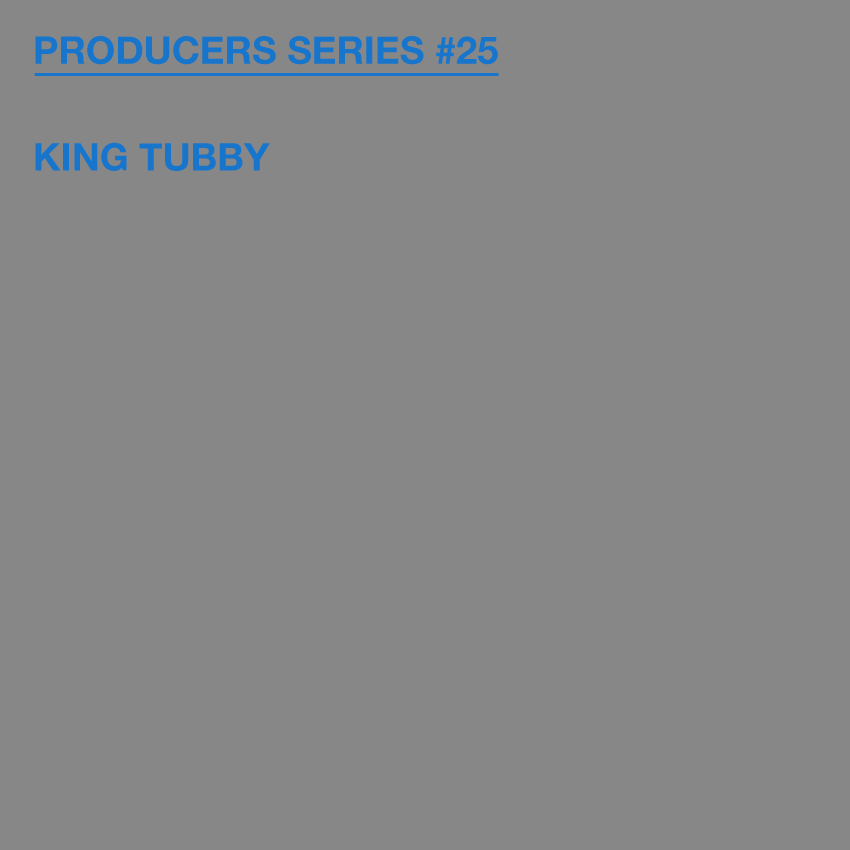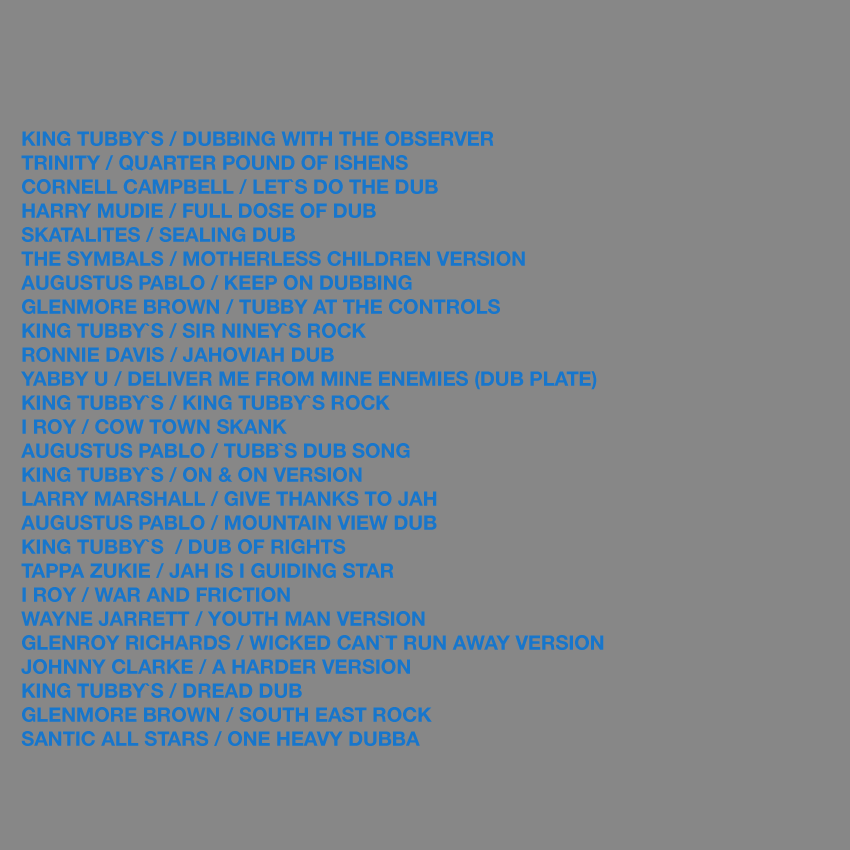King Tubby TP273
Mix
I`d argue that James Brown and Osbourne “King Tubby” Ruddock are the two men that shaped modern dance music. Brown created the “beat”. Upon Bunny Lee`s suggestion, and taking the lead from Spanish Town sound, “Ruddy`s Supreme” and Rudolph “Ruddy” Redwood, in much the same way as Flash ran with Theodore`s discovery of the scratch, Tubby undoubtedly created the “Dub”.
As always with these Producer compliations I have to state that I am no expert, these are just some of my favourites, and it was a difficult selection to pull together for it`s not obvious who was working the board for each version. Engineers at Tubby`s included not only the King himself but Lloyd “Prince Jammy” James, Hopeton “Scientist” Brown, Phillip Smart, Pat Kelly and The Professor. I read somewhere that the engineers themselves often can`t remember who did what, since despite the hallowed status of some of these tracks, the studio was turning mixes around like a production line, in shifts. Jammy covering for Tubby while he popped out for a sandwich. We really need Steve Barker, Sherwood or Noel Hawks.
Tubby didn`t actually start giving himself a production credit until he built his then state-of-the-art digital studio in the early `80s, while all of the music here was recorded in the `70s. This raises the issue of remixer or producer? A question which we will come to again. One definition of a producer is not the writer or player of songs, but the person who is in charge, who arbitrates, keeps people together, focused on a common purpose, and this is something Tubby certainly did, encouraging his wards and emerging talent.
Small producers such as Vivian Jackson / Yabby U, Glenmore Brown, and Augustus Pablo, would come to Tubby`s self-built facility on Drumilie Avenue, primarily because the established ones were out of their financial range. Jackson famously worked six months to save the $50 that Tubby agreed to accept for the mix of “Conquering Lion”. This cost cutting would create history since, because Tubby kept his prices way down, all DJ takes would be voiced in his booth. The distinct otherness that Tubby`s home-made equipment provided to these recordings almost seems to have been an accident. The “upgrades” to the machinary were usually improvisations borne out of economic necessity, and consequently, acts of world changing serendipity.
Drums run backwards, into themselves. A blast of horns bolts for a closing door. Power generated by the wild use of EQ, before EQ existed. Guitars lines like ghosts, subliminal hauntings, but it`s this suggestion of presence that makes Dub work. Radical patterns revealed by delay, as each hit collides with the last. Treble taut fairground Wurlitzers, and pianos dropped down lift shafts. Blue singers lost to a void. Flashes of lightning. The crack of a slavers whip. Rhythm an avalanche. A rock slide. Nowhere to hide. Songs re-written live at the board. Sometimes a restrained calm meditation, flutes become ethereal, Japanese shakuhachi or shinobue blown at a temple. Sometimes a furious frenzied attack, cymbals, everything, flying, like on the Skatalites “Sealing Dub”.
“Full Dose Of Dub” has sound twisted wire tight. Pablo is saturated in dread weight. Music so heavy you can feel the heat and humidity. Swimming through quicksand. So claustrophobic, you can hear gunshots in the street.
A brief snatch of vocal permits comparison, a “before & after”, allows the uninitiated to guess at what the King is doing. Stripping it back, rebuilding something new, releasing an energy that was previously hidden (isn`t that the art of the remix?). Increasing the interplay between bass and percussion. The DJ given space. I-Roy become a sun in the centre of a meteor shower. Draw down the wrong slide on a patched up Fisher reverb unit and audio turns inside out.
There are echoes of the future. “Sir Niney`s Rock” is almost House. Hats and brass repeat in rapid 4:4 fanfare. Baldelli`s use of EQ. Derrick Carter playing the first three tracks of a set with the low end turned off. FK birthing Dub Disco. Levan`s obsession with the separation of sound.
The “Dread Dub” version of the “Kuss Kuss” rhythm, included here, was really my conscious introduction to Tubby`s. I bought the LP from Keith at Daddy Kool. I also picked up a copy of Willie Williams` “Armagideon Time”, which seemed to create a soft spot for me in the often fire-y Mr Stone. He certainly didn`t suffer fools, gladly or at all. Up until that point I`d been buying Scientist LPs, Augustus Pablo (it had a discernable melody and was shot through with a melancholy, which has proved to be key), Junjo Lawes produced 12s, Eek-A-Mouse, Yellowman, Clint Eastwood & General Saint, Johnny Osbourne, Barrington Levy. The world of Tubby`s was something altogether more subtle. Single malts versus Rum and Coke.
Tubby was revered in his local community of Waterhouse (nicknamed Firehouse due to the level of daily violence), not just for his technical knowhow or musical ear. Relatively affluent in the `80s he could have moved away, uptown, but instead built his new studio in the same ghetto location, in an attempt to bring business and money into the area. Like Jammy says, “He wasn`t called “King” for nothing”.


